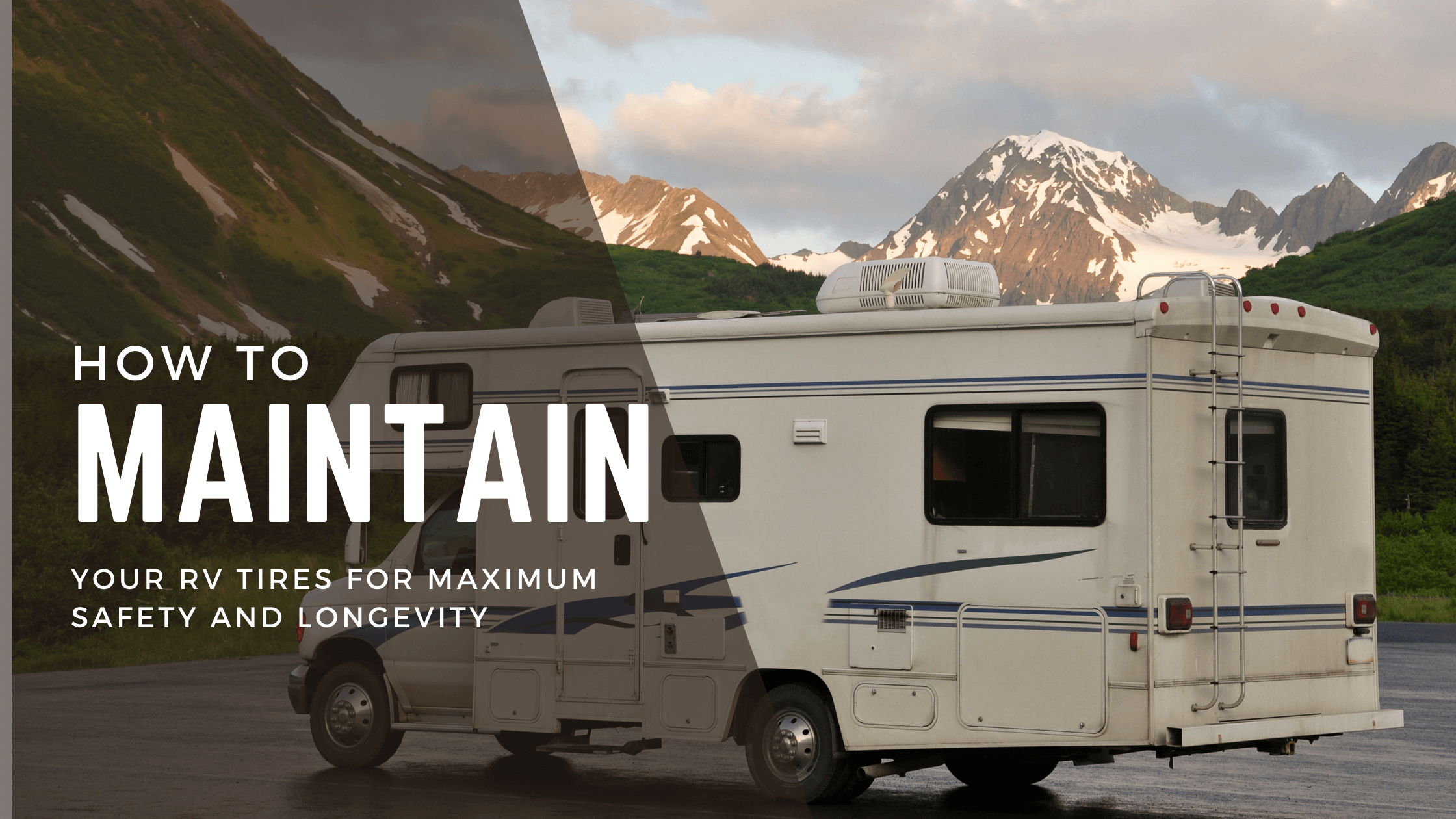

It seems that the list of what you have to do to get ready before traveling is endless. Whether you have a limousine, over-the-road truck, or recreational vehicle, maintaining your tires is of extreme importance, primarily to ensure your own and your passenger's safety.
THE IMPORTANCE OF TIRE INFLATION PRESSURE
The most critical factor in tire maintenance is proper inflation. Driving on any tire that does not have the correct inflation pressure is dangerous and will cause tire damage. Improper pressure for the vehicle's weight could cause premature wear, tire damage, or a harsher ride. The correct inflation pressure allows for complete tread contact with the road surface and promotes traction, braking capability, and handling.
An underinflated or overloaded tire will build up more heat that could go beyond the endurance limits of the rubber, steel belts, and radial cords. This could cause sudden tire failure. Underinflation will cause poor handling, faster and/or irregular tire wear, and a reduction in fuel economy. On the other hand, overinflation will reduce the tire's contact area with the road surface, which reduces traction, braking ability, and handling. A tire that is overinflated for the weight it is carrying is more prone to a harsh ride, uneven tire wear, and impact damage.
WHEN TO CHECK RECREATIONAL VEHICLE TIRE PRESSURE
For optimum performance and handling, it is essential to establish the proper inflation pressure and regularly inspect recreational vehicle tires for cuts, snags, and penetrations. Failure to maintain correct inflation pressure may result in sudden tire destruction and/or improper vehicle handling. Additionally, it will result in irregular tire wear. Check inflation pressures on all tires (including spares):
¨ At a minimum, check weekly and always before long-distance trips.
¨ On long trips, check every morning before driving.
¨ Before and after storage, check and record tire pressures (a pressure drop may indicate a slow leak). The ideal time to check tire inflation pressures is early morning. Driving, even for a short distance, causes tires to generate heat, increasing inflation pressure. The stated pressures found in published load inflation tables are based upon the cold tire inflation pressure at ambient outside temperature. A drop in ambient temperature results in a reduction in tire pressure; Never exceed the wheel's maximum load or pressure limits. Exceeding the wheel limits can lead to component failure, serious accidents, injury, or death.
TIRE REPAIRS
When a tire experiences a tread puncture, it may be safe to return it to service if it is properly repaired. A tire must be repaired from the inside to make a careful inspection to the inner liner. The tire technician should use a combination plug and patch, where the rubber plug seals the damaged area from outside contaminants and moisture, and the patch reinforces the inner liner. Always consult a Michelin tire dealer for a professional inspection and repair.
AGING, WEATHER CHECKING, AND OZONE CRACKING
During tire inspections, check the sidewalls for signs of aging, referred to as weather checking or ozone cracking. Aging appears as tiny cracks in the rubber surface of the sidewall. If the cracks are less than 2/32" deep, the tire is acceptable to keep in operation; when the cracks extend deeper than 2/32", the tire should be inspected by a Michelin tire dealer and possibly replaced.
To promote long life and prevent premature tire aging:
¨ Keep tires properly inflated and rotated.
¨ Keep tires clean, avoiding petroleum products, alcohol, and silicone.
¨ Avoid prolonged exposure to high heat, extreme cold, and ultraviolet rays.
¨ Cover the tires when the vehicle is not in use.
PROPER CLEANING OF RV TIRES
Proper cleaning of tires is essential to obtain the maximum years of service. Road oil will cause deterioration of rubber, and dirt buildup will hold contaminants next to the tire. A soft brush and mild car wash soap are the best ways to clean tires. If a dressing product is used on a tire sidewall, use extra care and caution. Tire dressings that contain petroleum products, alcohol, or silicones may cause premature aging and sidewall cracking.
In many cases, it is not the dressing product itself that can be a problem, but rather the chemical reaction that the product can have with the antioxidant waxes found in the tire. Heat can add to this adverse reaction. When these same dressing products are applied to a passenger car tire replaced every three or four years, it is rare to see a problem. However, since Recreational Vehicle tires usually last much longer, there is more time for a chemical reaction to occur.
TIRE ROTATION, BALANCE, ALIGNMENT, AND TIRE WEAR
When tires are properly mounted and maintained with the correct inflation pressure, they should wear in a smooth, even pattern. To maximize tire wear, Michelin recommends the following best practices.
Ř Tire Rotation
MICHELIN® tires should be rotated when necessary. If the tires are wearing evenly, there is no need to rotate. If tires begin to show an irregular wear pattern, or if the wear rate on the tires from axle to axle or side to side is perceptively different, the tires should be rotated. There is no restriction on criss-cross rotation; however, it should be included in the rotation pattern if the vehicle is equipped with a spare tire/wheel. If using directional tires, and if the tires are less than 50% worn, ensure tires are mounted to rotate in the proper direction. Once a directional tire has worn more than 50% of its tread, it is acceptable to rotate into any position. Considerations about tire rotations include:
? The load carried by a particular tire in a specific position of wheel varies. The inside tire in a dual position carries more load than the outside tire on the same axle.
? Curbing damage and weather checking often occur on the outside sidewall of the outside tire.
? Tires in dual should not differ more than 1/4" diameter (4/32" tread wear). When there is a difference in tread wear, fit the least worn tire in the outside wheel position.
? When there is irregular wear, rotate the tires, so they turn in the opposite direction
Ř Tire Balance and Runout
Check with your recreational vehicle dealer for tire balance recommendations. It is customary to check tire and wheel assembly balanced and runout if there is a ride complaint. If there is a ride disturbance, validate that tire inflation pressures are correctly adjusted. If inflation pressures are correct, consult your recreational vehicle dealer or a Michelin tire dealer for assistance. To identify the source of the ride disturbance, consider the following factors to assist the servicing dealer:
¨ Road conditions when the vibration occurs.
¨ Vehicle speed and engine RPMs when the vibration occurs.
¨ Where the vibration seems to be coming from (front or rear of the vehicle).
¨ Frequency of the vibration (Does it phase-in/out, or is it constant?).
Ř Alignment
The purpose of alignment is to minimize tire wear and maximize predictable vehicle handling and driver control. Toe misalignment is the number one cause of steer tire irregular wear. In order to optimize tire wear, consider the following:
¨ Tires that are not operated at a normal (perpendicular) angle to the road surface typically produce uneven tire wear. Tires that are aimed in contrasting directions (because of conflicting alignment angles) produce unfavorable and irregular tire wear.
¨ Tires that are used on highly compliant suspensions will likely produce uneven tire wear.
¨ Alignments should be conducted in the recreational vehicle's most representative loading condition, including cargo load, fuel, and water.
¨ Check with your recreational vehicle dealer for specific alignment specifications.
REMEMBER
On average, your tires carry tremendous weights, anywhere from 16 to 20 tons. Therefore, taking care of your tires is of #1 importance, and we wish you excellent and safe traveling adventures.